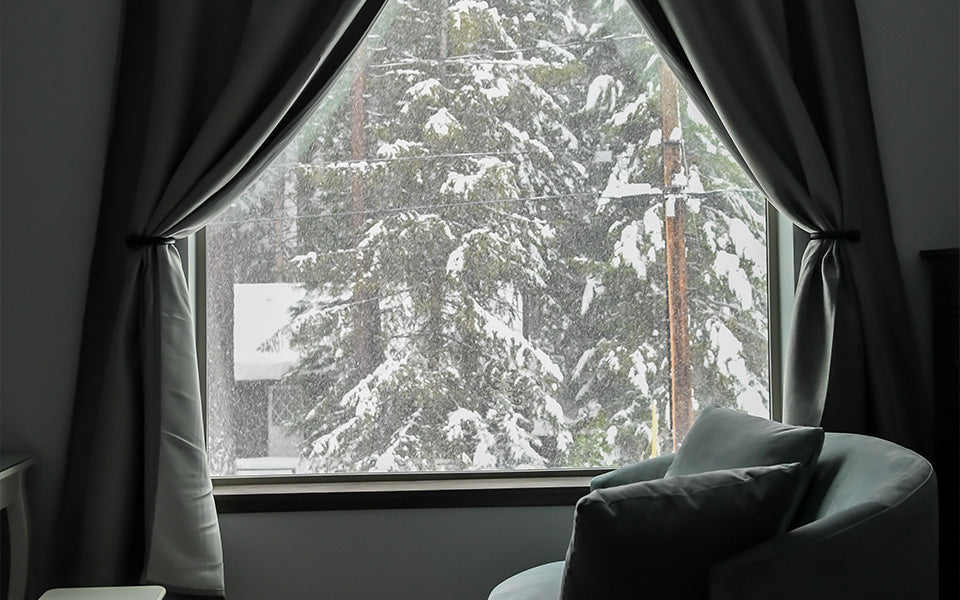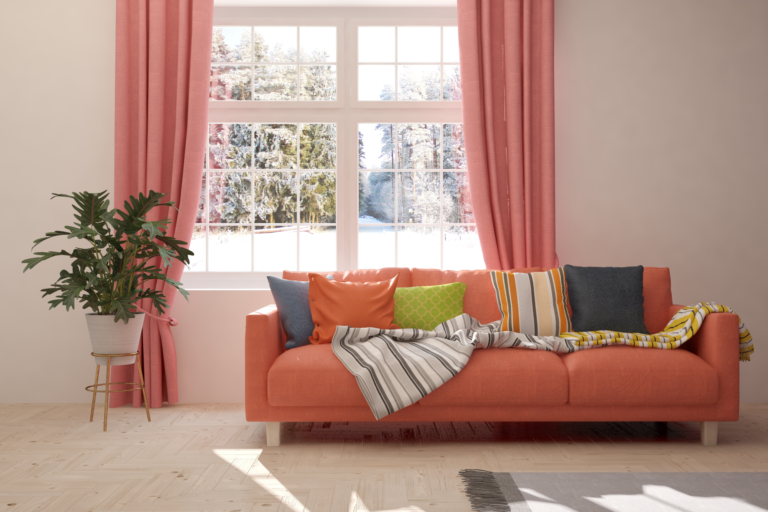
Hello, Huetifulhomes readers! Today we’re going to talk about something that many of you have wondered about: is it better to keep curtains closed in winter?
You know what we’re talking about: those cold and dark winter days when you want to keep your home warm and cozy. You may think that closing your curtains will help you save energy and keep the heat inside, but is that really true?
The answer is: it depends. Closing your curtains can have both advantages and disadvantages when it comes to keeping your home comfortable and efficient in winter. In this post, we’ll explain how curtains affect the temperature and humidity of your home, and when you should open or close them to get the best results.
So grab your cozy blanket and let’s get started!
Is it better to keep curtains closed in winter: It depends on the time of day, the type of curtains, and the condition of your windows. Generally, you should open your curtains during the day to let the sunlight warm your home naturally, and close them at night to prevent heat loss through the windows. However, there are exceptions and tips to optimize your curtain use in winter.
Curtains are more than just decorative items for your windows. They also play an important role in regulating the temperature and humidity of your home, especially in winter.
Curtains act as insulators, creating an air gap between the window and the room. This air gap can either trap or block heat, depending on the direction of heat flow.
During the day, when the sun is shining, heat flows from outside to inside through the window. If you open your curtains, you allow this heat to enter your room and warm it up naturally. This can reduce your heating costs and make your home more comfortable.
However, if you close your curtains, you block this heat from entering your room and create a cooler air gap between the window and the curtain. This can make your room feel colder and increase your heating costs.
During the night, when the sun is down, heat flows from inside to outside through the window. If you close your curtains, you trap this heat inside your room and prevent it from escaping through the window. This can reduce your heat loss and keep your home warmer.
However, if you open your curtains, you allow this heat to escape through the window and create a warmer air gap between the window and the curtain. This can make your room feel drafty and increase your heat loss.
Curtains also affect the humidity of your home, which is related to the temperature and condensation. Humidity is the amount of water vapor in the air, expressed as a percentage of how much water vapor the air can hold at a given temperature.
The higher the humidity, the more water vapor there is in the air. The lower the humidity, the less water vapor there is in the air.
Humidity affects how warm or cold you feel in your home. High humidity makes you feel warmer because water vapor prevents sweat from evaporating from your skin, which is a natural cooling mechanism. Low humidity makes you feel colder because water vapor absorbs heat from your body, which is a natural warming mechanism.
Humidity also affects how much condensation forms on your windows. Condensation is the process of water vapor turning into liquid water when it comes into contact with a cold surface.
The higher the humidity, the more condensation there is on your windows. The lower the humidity, the less condensation there is on your windows.
Condensation can be a problem for several reasons. It can reduce visibility through your windows, damage your window frames and sills, promote mold growth, and cause health issues such as allergies and asthma.
Curtains can help reduce or increase humidity in your home, depending on how they are used. If you close your curtains at night, you create a warmer air gap between the window and the curtain, which reduces condensation on your windows. However, this also traps moisture inside your room, which increases humidity.
If you open your curtains at night, you create a cooler air gap between the window and the curtain, which increases condensation on your windows. However, this also allows moisture to escape from your room, which reduces humidity.

As you can see, curtains have different effects on the temperature and humidity of your home depending on how they are used. Therefore, there is no definitive answer to whether you should open or close them in winter.
However, there are some general guidelines that can help you optimize your curtain use in winter:

Now that you know how to use curtains in winter, here are some examples of curtains that are suitable for sliding glass doors, which are common in many homes.

Q: Is it better to keep curtains closed in winter?
A: It depends on the time of day, the type of curtains, and the condition of your windows. Generally, you should open your curtains during the day to let the sunlight warm your home naturally, and close them at night to prevent heat loss through the windows.
Q: How do curtains affect the temperature and humidity of my home?
A: Curtains act as insulators, creating an air gap between the window and the room. This air gap can either trap or block heat, depending on the direction of heat flow. Curtains also affect the humidity of your home, which is related to the temperature and condensation.
Q: How do I measure, choose, and hang curtains for my sliding glass doors?
A: To measure the width of your sliding glass doors, add 8 to 12 inches to allow for stacking space on both sides. To measure the length of your sliding glass doors, add 4 inches to hang them above the door frame. To choose a curtain rod, add 8 inches to the width of your sliding glass doors. To choose curtain panels, divide the width of your sliding glass doors by the number of panels you want to use, and round up to the nearest standard size. To hang your curtains, mark where you want to install your curtain rod brackets 4 inches above and beyond the door frame on both sides, attach them with screws, slide your curtain panels onto your curtain rod, and hang it on the brackets.
That’s it, Huetifulhomes friends: is it better to keep curtains closed in winter. Now you can use your curtains wisely to keep your home warm and cozy in winter, while also saving energy and money.
If you liked this post, please share it with your friends and family who could use some tips on how to use curtains in winter. And stay tuned for more home hacks and decor ideas from Huetifulhomes.com!

Dale is the colorful mind behind HuetifulHomes.com, where he shows you how to create a home that is as fun and fabulous as you are. He has a passion for color and a knack for DIY, with years of interior design experience he shares his tips and tricks on how to create a home that reflects your personality and style. He believes that color is the key to happiness, and he wants to help you make your home more Huetiful.